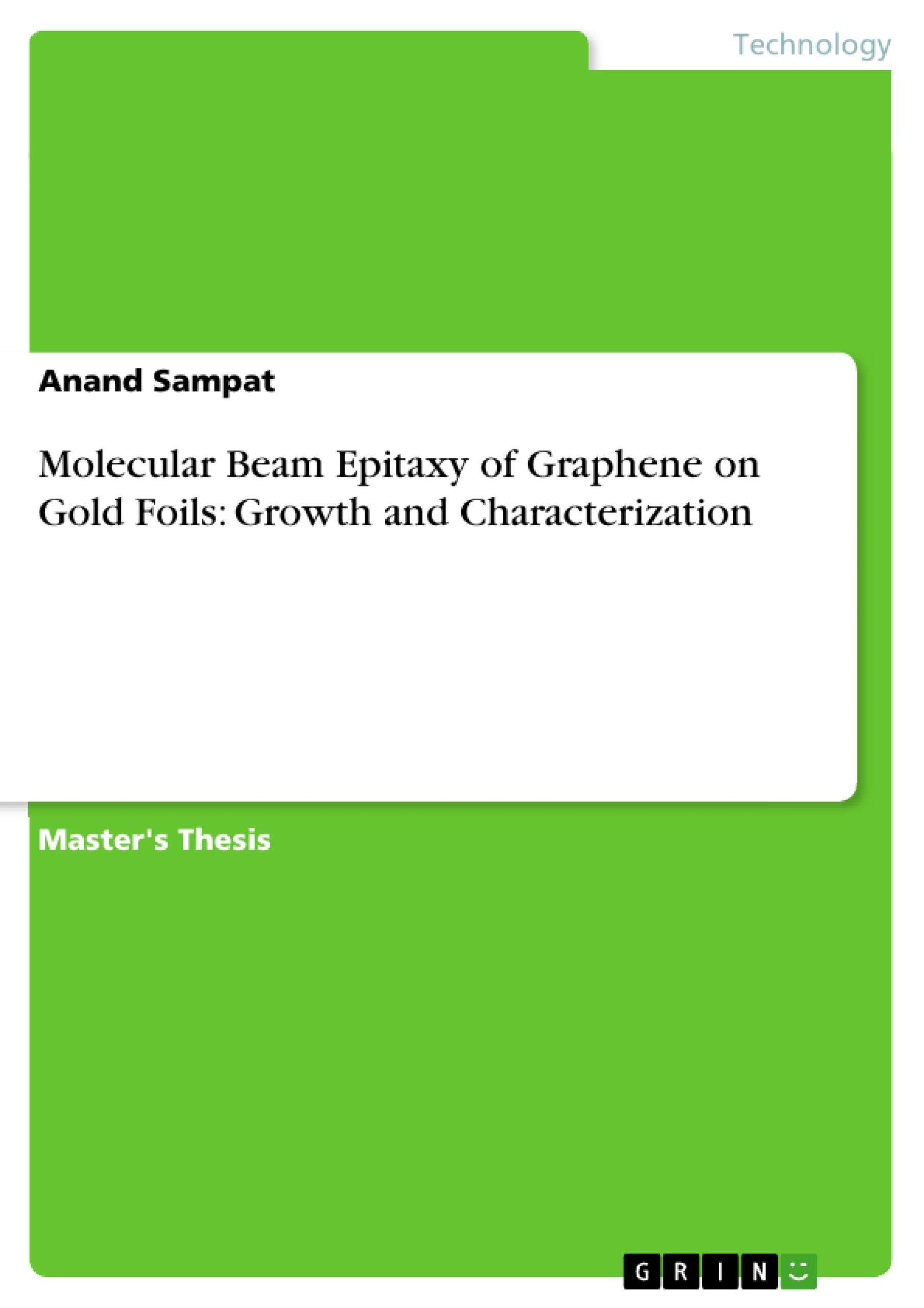The application of graphene for large-area electronics requires controllable growth of single crystalline quasi-freestanding graphene films. Controllable growth of graphene films on gold foils at various temperatures using molecular beam epitaxy is shown. Film quality and electrical characteristics probed using Hall measurement, Raman spectroscopy, and Rutherford backscattering spectrometry are shown to improve at lower temperature possibly peaking at ~825˚C. Further experiments are required to assess a stronger correlation between growth parameters and film characteristics. In particular, varying carbon flux and increasing the number of growths are discussed.
Inhaltsverzeichnis (Table of Contents)
- Abstract
- I. Introduction
- II. Theory
- A. Graphene
- i. Properties
- ii. Graphene Growth and Kinetics
- B. Characterization
- i. Surface Topology Analysis using Atomic Force Microscopy (AFM)
- ii. Vibrational Energy States Using Raman Spectroscopy
- iii. Chemical Composition using Rutherford Backscattering Spectrometry
- iv. Electrical Carrier Concentration and Mobility using Hall Measurement
- A. Graphene
- III. Experimental Methods
- A. Growth Process
- B. Transfer Process
- C. Electrical Characterization
- D. Material Characterization
- IV. Results
- V. Discussion
- A. Explanation of AFM Images
- B. Explanation of Raman Spectra
- C. Explanation of Rutherford Backscattering Spectra
- D. Explanation of Hall Measurements
- E. Growth Parameters vs. Film Characteristic Trends
- VI. Conclusion
- VII. References
- VIII. Appendix
Zielsetzung und Themenschwerpunkte (Objectives and Key Themes)
This work investigates the controlled growth of single crystalline quasi-free-standing graphene films on gold foils using molecular beam epitaxy. The main objective is to explore the relationship between growth temperature and the quality and electrical characteristics of the graphene films. The study uses a range of characterization techniques, including Hall measurement, Raman spectroscopy, and Rutherford backscattering spectrometry, to assess film properties.
- Growth of graphene on gold foils using molecular beam epitaxy.
- Influence of growth temperature on graphene film quality and electrical characteristics.
- Characterization of graphene films using Hall measurement, Raman spectroscopy, and Rutherford backscattering spectrometry.
- Comparison of graphene growth on gold foils with other metal substrates.
- Exploration of potential for further optimization of growth parameters, such as carbon flux and number of growths.
Zusammenfassung der Kapitel (Chapter Summaries)
The introduction provides an overview of the importance of graphene for large-area electronics and outlines the challenges and opportunities associated with its growth on metal surfaces. Chapter II discusses the theoretical background of graphene, including its unique electronic properties and the various characterization techniques used in the study. The experimental methods employed for graphene growth, transfer, electrical characterization, and material characterization are described in Chapter III. Chapter IV presents the results of the investigation, detailing the observed characteristics of graphene films grown at different temperatures. Chapter V analyzes and interprets the experimental results, providing explanations for the observed trends and exploring the potential for further optimization of graphene growth parameters.
Schlüsselwörter (Keywords)
The key themes of this work revolve around the growth, characterization, and properties of graphene films on gold foils using molecular beam epitaxy. The main keywords include graphene, gold, molecular beam epitaxy, growth temperature, film quality, electrical characterization, Hall measurement, Raman spectroscopy, Rutherford backscattering spectrometry, and transfer process.
- Quote paper
- Anand Sampat (Author), 2012, Molecular Beam Epitaxy of Graphene on Gold Foils: Growth and Characterization, Munich, GRIN Verlag, https://www.grin.com/document/207041



